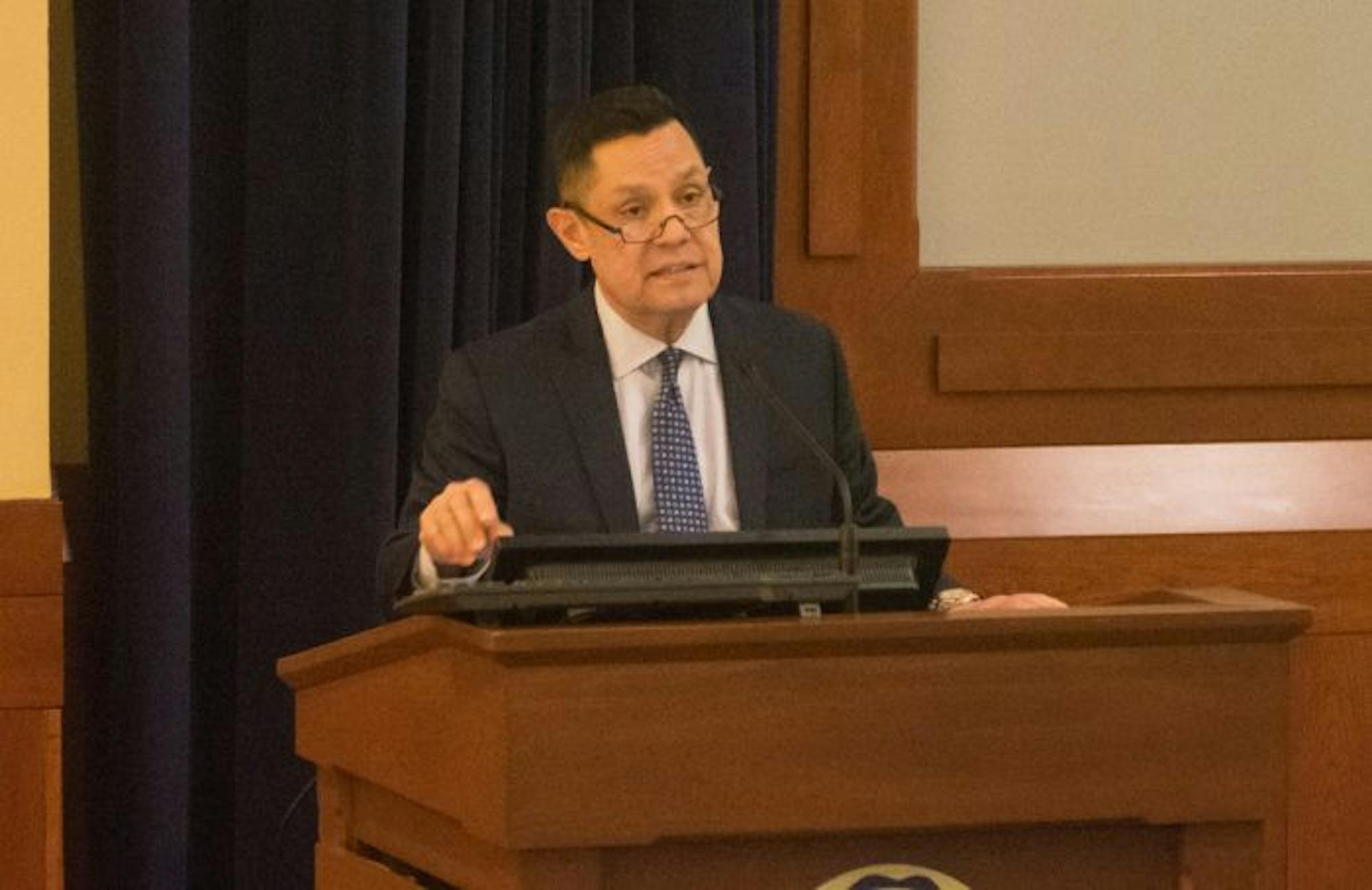Latinos now comprise 35 percent of all Catholics living in the United States; for practicing Catholics under 30, Latinos comprise 52 percent. Yet, only 15–17 percent of all students enrolled in Catholic schools are Latino.
Luis Ricardo Fraga, director of the Institute for Latino Studies, addressed this low enrollment of Latino students in Catholic schools and explained the importance of the Latino and Catholic communities for predicting American demographic trends in his Wednesday night lecture, part of the 2017 Hesburgh Lecture series.

Chris Collins | The Observer
Luis Ricardo Fraga, director of the Latino Studies, delivered the 2017 Hesburgh Lecture Wednesday at the Eck Center. Fraga discussed the under enrollment of Latino students in American Catholic schools.
“Those of us in positions of responsibility and in positions of influence — voters, all of us who are Catholic, who are citizens of the country, who are residents of this country — we have a chance to decide what kind of legacy we want to leave subsequent generations,” Fraga said.
Fraga said the Latino community in America is not just growing, but also dispersing throughout the country into less-concentrated areas.
“What we see is a dispersion across the entire country [of Latinos],” he said. “Fifty-two percent of students in [Goshen, Indiana] are Latino. … This changing demographic is not just a growth in population, but a geographical dispersion.”
Nationwide, Fraga said the percentage of the population that identifies itself as “white” is decreasing, with the rapidly growing Latino population contributing largely to the demographic change.
“The future of the country in terms of race and ethnicity is already there for the next generation,” he said. “The future reality is the reality of my children and, hopefully, my grandchildren. … Ninety-four percent of Latinos under the age of 18 [are American citizens]. The future of this community is here and is as American — under current law — as one can be.”
Fraga noted that while the Latino population has a high percentage of members who find it important to maintain their ethnic identity — measured through the maintenance of Spanish-language skills — across generations, there is also a huge emphasis on integrating into American society.
“Ninety-four percent of the first generation said it’s extremely important to learn English,” he said. “This community wants to both integrate and remain distinct.”
While the Latino community is changing, Fraga said the “enrollment gap” in Catholic schools remains.
“Only 5 percent of all Latino youth in the country are enrolled in Catholic schools,” he said. “There are a lot of challenges. A lot of Latino families — even if they’re Catholic — don’t know about Catholic schools, and don’t know about the possibilities afforded by Catholic schools.”
Part of this unfamiliarity owes to the fact that Latinos come from countries where it is not assumed that many parishes have a school associated with them, Fraga said.
In addition to financial difficulties and a lack of Latino teachers, board members and administrators, there is a problem with increasing Latino enrollment because schools are not being “welcoming.”
“We had a number of Latino parents who told us that when they called their local parish schools, the first question they were asked was ‘Do you have papers? We only enroll students who are here legally,’” he said. “Is that consistent with Catholic doctrine? Is that consistent with the messages we’re getting from Pope Francis? Is that consistent with the message we’re getting from the U.S. Conference of Catholic Bishops? Is that consistent … with the message of welcoming all to our churches? ... The welcoming that Latino families often receive, oftentimes, is fundamentally problematic and more concerted efforts need to be made to show respect.”
Fraga said that even though the Church may not be known for being on the “forefront of social change,” the changing demographics offer it a unique challenge.
“What does it mean to be Catholic in a changing Church and a changing country? … We’re coming together,” he said. “Maybe not us, specifically, but our children and our grandchildren — they’re coming together,” he said. “ … Divine providence has put us in this position, not by chance, but to see if we’re up to the challenge of building an intercultural community based on the most soulful practices of the Gospel.”









